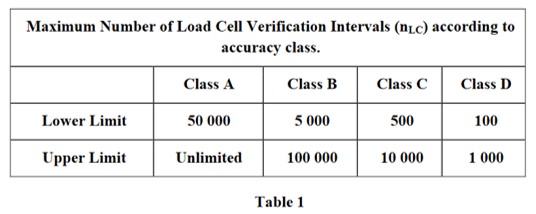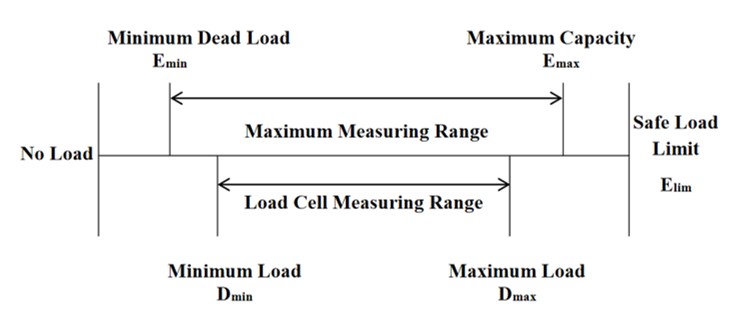A load cell is a type of force sensor and it has a direct relationship to pressure, since:
pressure = force/area Eq. 1
The load cell’s electrical output is proportional to the mechanical force applied to it. The force can be hydraulic or pneumatic and the transducer is normally based on strain gauges. Other types of load cells available today include: miniature (also sub-miniature), beam, platform (hermetically sealed), canister (hermetically sealed for harsh environments and tension/compression (including industrial) designs. The load cell’s construction determines the type of applications they can address ranging from tight space measurements, maximum capacity range and environmental considerations.
According to the International Organization of Legal Metrology (OIML) technical committee (TC 9): Instruments for Measuring Mass and Density in “Metrological Regulation for Load Cells Part 1: Metrological and Technical Requirements,” “Load cells shall be ranked, according to their overall performance capabilities, into one of the four accuracy classes: Class A, Class B, Class C or Class D.”
The maximum number of load cell verification intervals (nLC) into which the maximum measuring range (Emax – Emin) can be divided shall be within the limits presented in Table 1. Class A and B are for high precision measurements. Class C is more common in engineering (industrial) measurements and Class D is used in produce and consumer goods measurements.
Because the relationship between force and pressure depends on area, it should not be surprising that a strain gauge is also a commonly used transducer for sensing pressure. In addition to bonded strain gauges using a 4-leg Wheatstone bridge on stainless steel and other diaphragm materials, microelectromechanical systems (MEMS) pressure sensors using silicon are common design techniques. No matter what the design technique, pressure sensors are often used to make force measurements (becoming a load cell) by using a sealed hydraulic or pneumatic chamber with a fixed area to apply the force and using Eq. 1 for the conversion factor.

